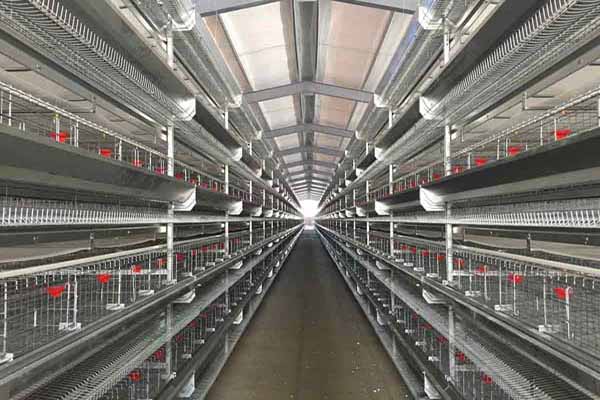Revolutionizing Chicken Farming in Uganda with Advanced Remote Monitoring Systems
Time : 2025-04-28
In the heart of Uganda, where agriculture is the backbone of the economy, the poultry industry is witnessing a technological leap with the introduction of remote monitoring systems for chicken equipment. This innovative solution is not just a tool but a game-changer for chicken farmers looking to enhance productivity and ensure the health and well-being of their flocks. Let’s dive into how this remote monitoring system is reshaping the poultry farming landscape in Uganda.
Understanding the Remote Monitoring System
First things first, what exactly is a remote monitoring system for chicken equipment? It’s a sophisticated network of sensors, software, and hardware that allows farmers to monitor their chicken equipment and the welfare of their birds from a distance. This means no more daily visits to the farm—farmers can now stay informed and in control of their operations, regardless of where they are.
Key Components of the System
1. Sensors: These are placed throughout the farm to monitor various parameters like temperature, humidity, and CO2 levels.
2. Software: The data collected by the sensors is processed by sophisticated software that provides real-time analytics and alerts.
3. Hardware: This includes the physical devices like tablets or smartphones that allow farmers to access the information.
The Benefits of Remote Monitoring in Uganda
Now, let’s talk about why this system is a big deal for Uganda’s chicken farmers.
1. Improved Productivity
By keeping a close eye on the chickens’ environment and health, farmers can make informed decisions that lead to higher productivity. For instance, if the temperature drops too low, the system can automatically adjust the heating to maintain optimal conditions.
2. Enhanced Animal Welfare
Monitoring systems ensure that chickens are living in a healthy environment. By detecting issues like overcrowding or high CO2 levels early on, farmers can take immediate action to prevent stress and disease.
3. Cost Savings
Think about the time and resources saved by not having to visit the farm daily. With remote monitoring, farmers can save on fuel, labor, and other operational costs.
How the System Works in Practice
Let’s imagine a typical scenario for a chicken farmer in Uganda using the remote monitoring system.
– Morning Routine: The farmer logs into the system using their smartphone. The software displays the current conditions in the chicken houses, including temperature, humidity, and CO2 levels.
– Alerts: If any of the parameters are out of the desired range, the system sends an immediate alert. The farmer can then decide whether to take action remotely or visit the farm.
– Data Analysis: Over time, the system provides valuable insights into the chickens’ behavior and health. This data can be used to optimize the farming process and increase yields.
Case Studies: Success Stories
Several farmers in Uganda have already adopted the remote monitoring system and are reaping the benefits. Here are a couple of success stories:
– John’s Farm: John has been farming chickens for over 20 years. He was struggling with maintaining the right temperature and humidity levels in his chicken houses. After installing the remote monitoring system, he noticed a significant improvement in the growth rate of his chickens. He also saved on fuel costs since he no longer needed to visit the farm as frequently.
– Lucy’s Poultry: Lucy runs a small-scale poultry farm. She had always wanted to expand but was worried about managing the increased workload. The remote monitoring system allowed her to monitor her chickens and equipment from home, giving her the confidence to expand her business.
The Future of Remote Monitoring in Uganda
The remote monitoring system for chicken equipment is just the beginning. As technology advances, we can expect more innovative solutions to enter the market. Here are a few trends that might shape the future:
– Artificial Intelligence: AI can be integrated into the system to predict and prevent potential issues before they arise.
– Blockchain: This technology can ensure the security and integrity of the data collected by the monitoring system.
– Internet of Things (IoT): The integration of IoT devices will allow for even more comprehensive monitoring and control of the chicken farming process.
Conclusion
In conclusion, the remote monitoring system for chicken equipment is a revolutionary tool for Uganda’s poultry farmers. It’s not just about technology; it’s about transforming the way chicken farming is done. By improving productivity, enhancing animal welfare, and reducing costs, this system is set to play a pivotal role in the future of agriculture in Uganda.












